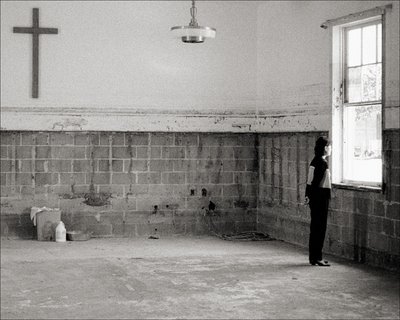Classic 200 in PMK Pyro
First the bad news. Classic 200 is grainy; it is very grainy. The grain is what I would expect with ISO 3200 film. One other minor cause for concern with Classic 200 is the film cassette. The cassette of my first roll seemed a bit delicate. The lips of the film opening were slightly agape, and my film was light-struck near the beginning of the roll. As a result, I’m putting the rest of the Classic 200 in black plastic canisters and loading/unloading the film in very subdued light.
Now the good news. It stains very well with PMK Pyro developer (although the staining action of the pyro wasn’t enough to suppress the grain). After a rather shocked reaction to the grain when I opened the first frame in PhotoShop, I began to appreciate other aspects of the film. One thing that impressed me is the smooth consistency of the grain structure over the entire negative. Maybe this is from being relatively silver-rich (as these older films are always touted to be). When I go carefully over an entire TRI-X negative in Photoshop to touch up dust specks, I sometimes see what appear to be gaps with missing silver or less silver. Although they do not affect the appearance of the final print, their presence (or I suppose I should say absence) is puzzling. I saw none of this on any negative in the Classic 200 roll. I suppose I might also add that one of the negatives in a roll of Foma 200 I shot last week had a nice round hole in the emulsion. While it was small enough to patch with the healing tool, it suggested to me that some of the machinery used to make films in
The inevitable question that arises is “Why would someone want to buy ISO 200 black and white film that is as grainy as ISO 3200 film?” That is a legitimate query. One reason might be the price (it is about the cheapest B&W film out there). Another might be the lower speed. I went out shooting one very bright day with
As it turned out, one of the subjects I shot with my first roll of Classic 200 worked well with lots of grain. I went to my now gutted church with several Presbyterian visitors from  Another retro developer, 777, seems to tame grain well. I’ll try that combination in the coming weeks.
Another retro developer, 777, seems to tame grain well. I’ll try that combination in the coming weeks.


<< Home